Will the Rajbaris of Khidderpore stand the test of time?
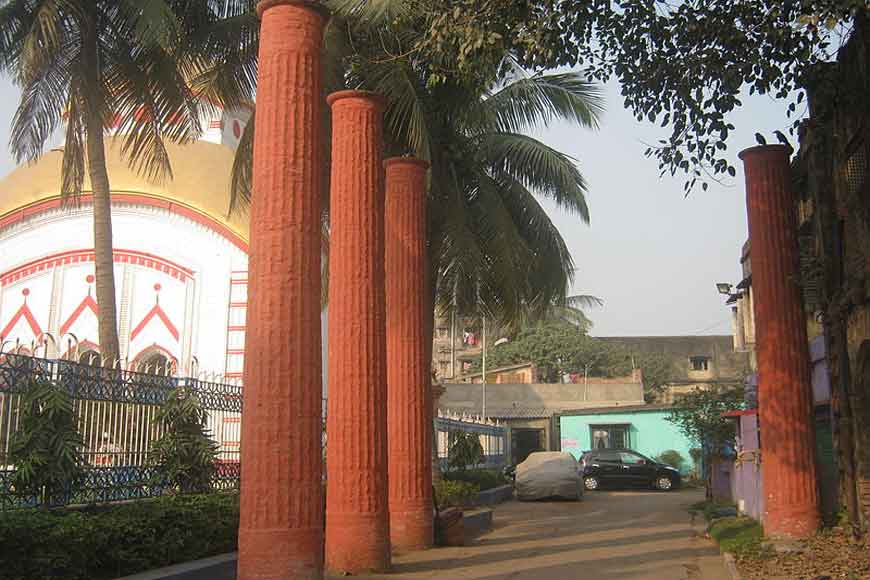
Kidderpore, located in the southern part of Kolkata is pretty ancient. It was once selected as the site for the wet docks of the port of Kolkata and hence is one of the oldest river ports under the control of Calcutta Port Trust. The place is one of the oldest neighbourhoods of Kolkata and is known for being the birthplace of three notable poets, Rongolal Bandhopadhyay, Hemchandra Bandhopadhyay, and Michael Madhusudan Dutt. It was also once upon a time famous for its Rajbaris, most of which have got lost behind the maze of shops and eateries. Some are in a dilapidated state.
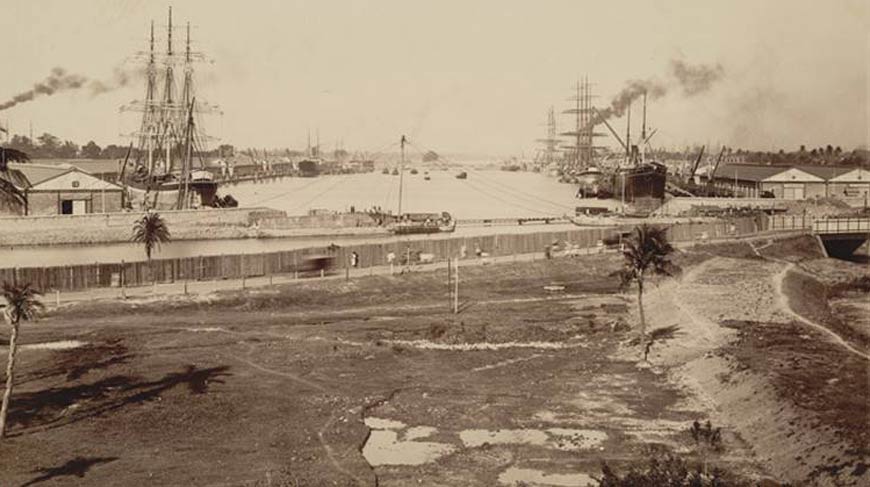 Kidderpore docks
Kidderpore docks
One such notable building is that of 500-year-old Bhukailash Rajbari which was given heritage status by the Kolkata Municipal Corporation (KMC) in 2009. Unfortunately, even after being recognized as a heritage site, the building is facing various challenges. Satya Dilip Ghosal, 70, and Mintu Ghosal, 66, are the only descendants of the family who still live in the Bhukailash Rajbari and are trying their best to save it from being taken over by land sharks.
Satya’s family has been a part of this Rajbari for 500 years. There is a lot of history and a lot of memories stored in this place. The Rajbari has witnessed different generations. This is where both Satya Dilip Ghosal and his daughter Antara Ghosal Singh were born and brought up. Evidently, the 500-year-old Rajbari is gradually decaying and deteriorating. The whole house, including every part of it, such as the staircase, terrace, corridors, storerooms, and so on, is a mess. The cement on the walls of the Rajbari has cracked, on some walls, the cement has fallen off and the brick structure is revealed. The fact that the house desperately needs a makeover and some renovation is clearly visible.
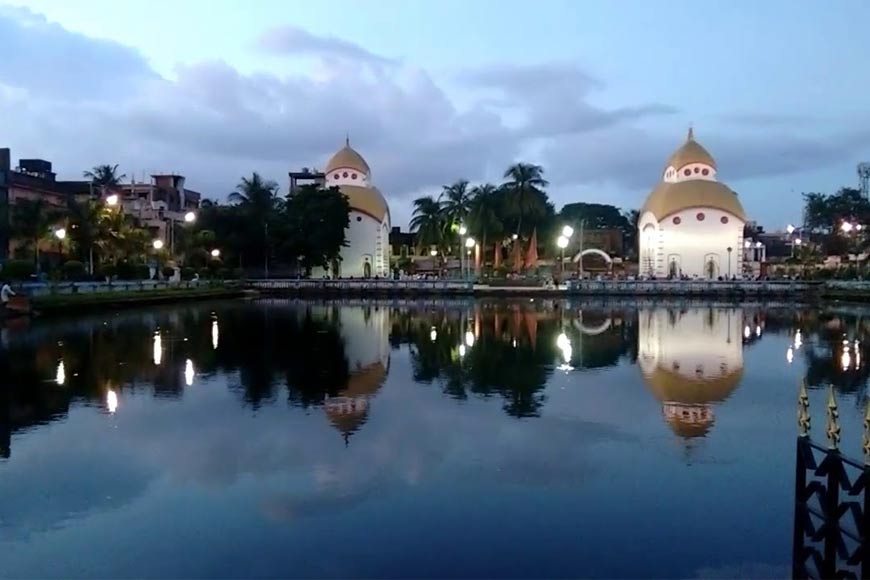
The Bhukailash Rajbari is sometimes also let out for shooting purposes and those who are familiar with the Bengali serials will be able to identify the place. This way it helps in earning some revenue and also maintains the place a little by keeping it clean. While entering the Bhukailash Rajbari, one will notice the changes due to lack of maintenance and the result of time. Inside the building, there used to be a dancing hall, whose roof has collapsed long ago. With the advent of nuclear families and the gradual extinction of joint families, these Rajbaris are also losing their essence and importance.
In the vicinity of the Bhukailash Rajbari are two large temples, of Durga and Shiva, both of which were accorded heritage status in 1996. The temple complex dates back to 1781. They have two of the biggest Shiva Lingas in eastern India, the length of each being 11 feet. The lingas are housed inside large temples spread over a large complex complete with waterbody. Raktakamaleshwar is the name of the Linga on the east and Krishnachandaneshwar is the name of the Linga on the west.
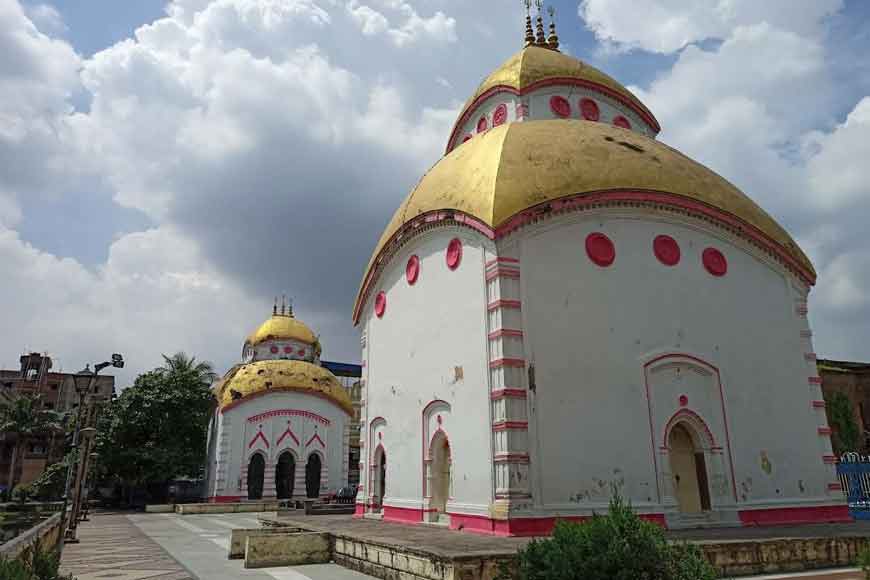
The temple was built by Raja Joynarayan Ghosal. Ghosal was born in 1752 and earned the title of “Raja” from a Mughal ruler. Ghosal used to trade with the East India Company. He was well-versed in many languages other than his mother tongues, such as English, Sanskrit, Arabic, Hindi, and Persian. He was closely associated with the great reformer Raja Rammohan Roy and was socially active as well.
The temple can be reached easily from the Kidderpore tram depot. Opposite the depot is a gate that leads the way toward the temple. While walking towards the temple complex one has to pass through a “Nahabat Khana” (drum house). The temple complex would seem to be covering a big area but in actuality, it used to cover an area of 108 bighas, compared to that it is much smaller. Due to many reasons, in this long period, most of the area has been encroached. The Bhukailash Rajbari and the temple complex once belonged to the same complex but now has been divided by a road between them.
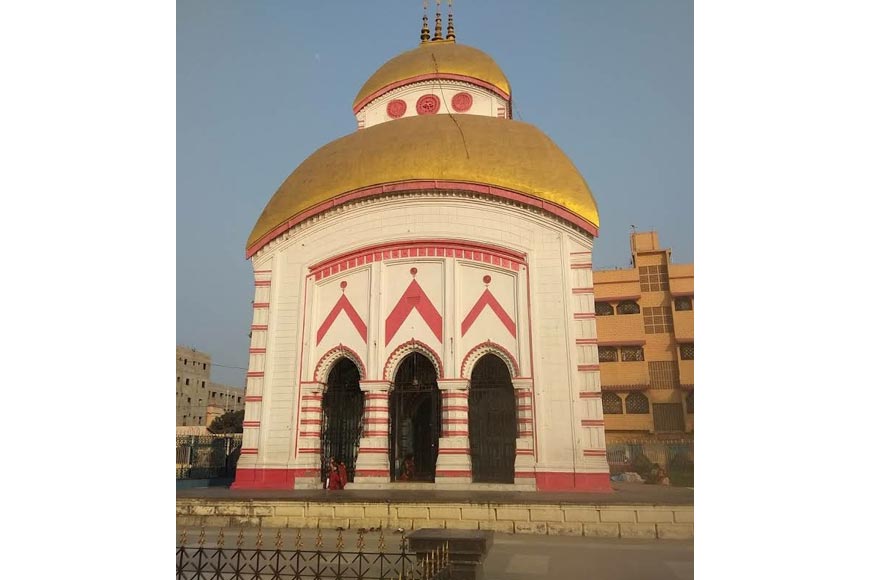
The temple was comparatively in better shape than the building. Instead of renovation, the temples have been rebuilt in a new way. The structures remain the same but the colours have been made more vibrant. The “aatchala” style that has been used to build the temples, is a unique style of temple architecture famous in Bengal. Before the renovation, the aatchalas were of rusty red colour with a blue outline and light yellow walls. But now the walls have been painted white and the aatchalas golden and red. Though the change is very minute, the very essence of the temples seems different. The temple also has visible traces of stucco ornamentation. There were traces of some fresco paintings inside the temples but they cannot be spotted anymore because of the restructuration. In 2013, KMC took up the job of restoring the temples and on 25th September 2013, the complex was opened to the public in the presence of the Diva Hema Malini.
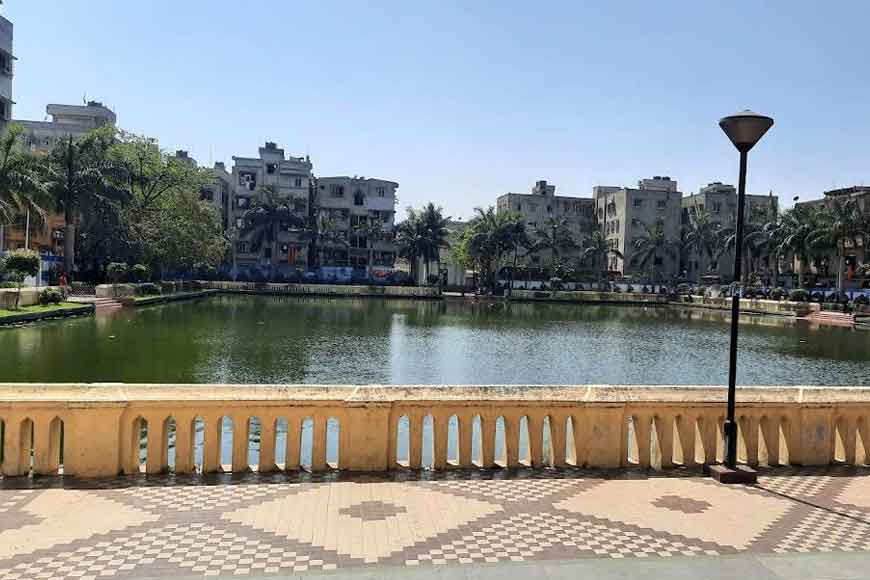
Many small changes have been brought about other than the restructuration of the temples. Between the two temples a large statue of Nandi, the bull has been installed. There is a pond that lies on the southern end and beyond that, there can be seen the Bhukailash Rajbari.
According to Vibha Mitra of Calcutta Heritage Collective, “To preserve such heritage sites, the owners have to renovate it and they lack the funds for that. So, we need people to come forward. Even the government needs to invite tenders to help renovate the place. Sadly, many of such heritage houses that were once resided by legends are now going to be pulled down, such as Kadambini Ganguly’s house. Even the owners are unhappy as they are unable to restore their houses because it requires a lot of financial strength.”
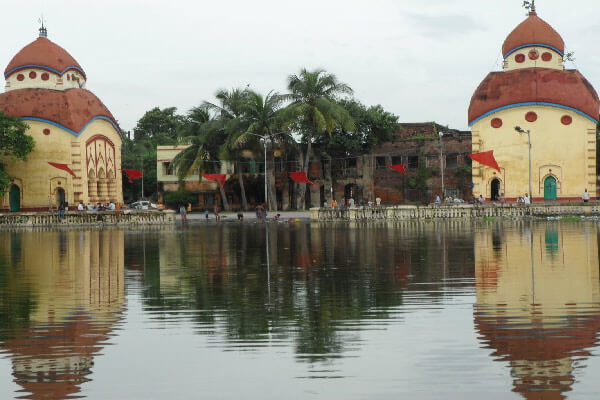
Can these Rajbaris be secured to depict the old realities of Kolkata? Can the next generation relate to such structures, where there are huge “Daalans” or open spaces, balconies called “Gari Baranda”, the Kadi Barga style of buildings, and so on? “The houses have to be repaired in the same ethos that they were built. Very often the buildings lose their originality while going through changes and renovations. So correct restoration process has to be followed. The youngsters need to show interest in such initiatives and participate actively.”










